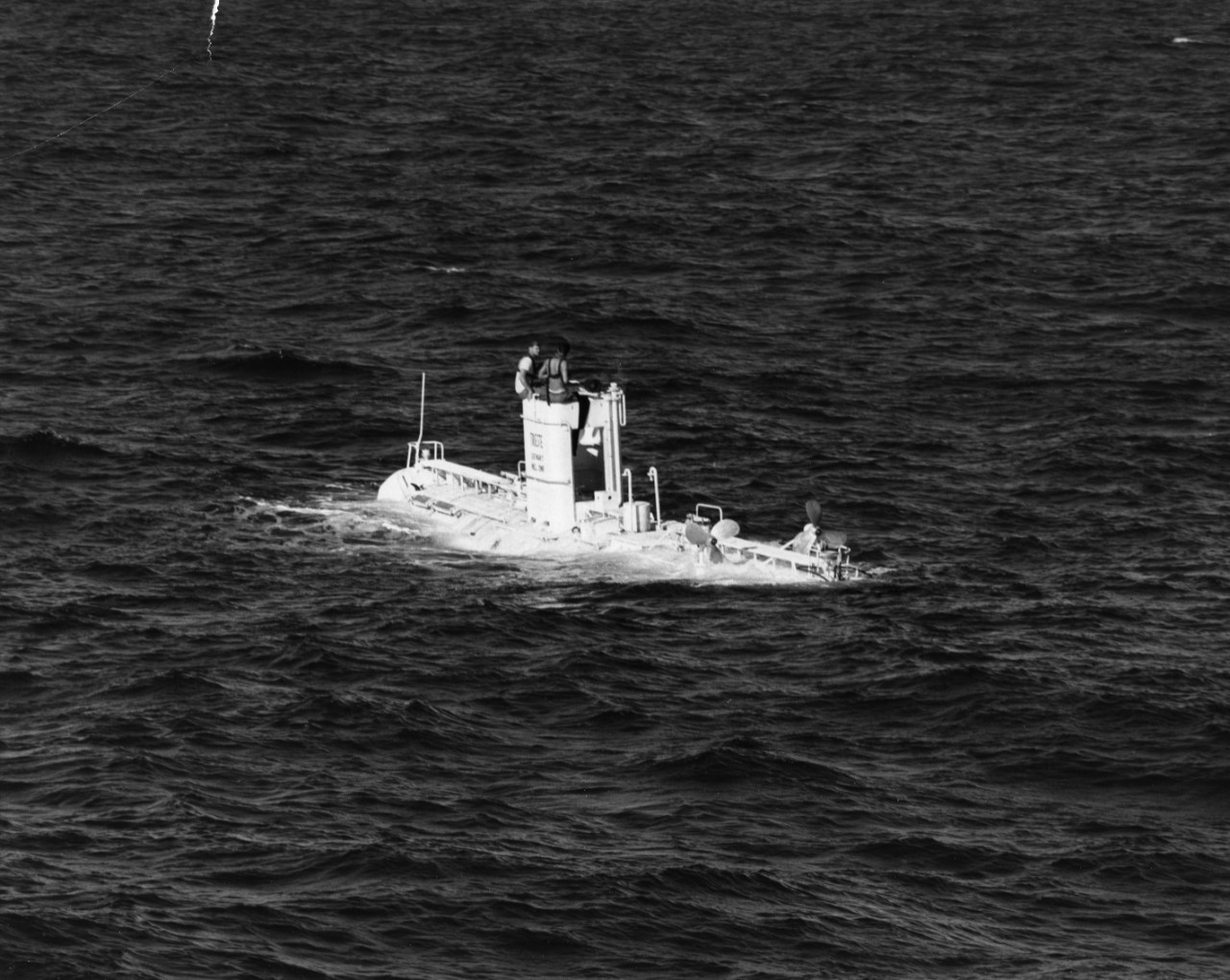Trieste I (Bathyscaphe)
(Bathyscaphe: t. 50; 1. 59'6"; b. 11'6"; dr. 18' (f.); cpl. 2)
A seaport in northeastern Italy at the head of the Adriatic Sea. The bathyscaphe was named for the town in appreciation for the support which its people rendered during the novel submersible's development.
Trieste, a research bathyscaphe, was the development of a concept first studied in 1937 by the Swiss physicist and balloonist, Auguste Piccard. World War II abruptly terminated Piccard's work in Belgium on his deep-sea research submarine, a bathyscaphe, and he did not resume it until 1945. Piccard later worked with the French government on the development of such a craft, until invited to come to Trieste, Italy, in 1952, to commence the construction of a new bathyscaphe. Scientific and navigational instruments to equip the craft came from Switzerland, Germany, and Italy. There, on the southern shore of the Gulf of Naples, at the Navalmeccanica, a civilian shipyard near Naples, Trieste took shape. In August 1953, the bathyscaphe was placed in the water for the first time. On 11 August 1953, Professor Piccard and his son Jacques made the trial dive-to a depth of five fathoms.
Between 1953 and 1956, Trieste conducted many dives in the Mediterranean. In 1955, Dr. Robert Dietz, of the United States Navy's Office of Naval Research (ONR), met Professor Piccard in London and discussed the project. During their talks, Piccard invited Dietz to Italy to see the bathyscaphe. During his visit the following year, Dietz invited Piccard to the United States to discuss the bathyscaphe's future as an American submersible.
A group of American oceanographers and underwater sound specialists visited Castellamare, Italy, the following summer, 1957, and tested and examined Trieste. They eventually recommended that the craft be acquired by the United States government. They thought that the submersible was the ideal craft to participate in Project "Nekton," an inspection of the deepest point in the world's oceans, the Challenger Deep, off the Marianas.
Thus, in the fall of 1958, Trieste was transported to San Diego, Calif., her new home port. Starting in December of that year, Trieste made several dives off San Diego. Fitted with a stronger sphere, fabricated by the Krupp Iron Works of Germany, Trieste was taken to Guam for Project "Nekton." With Wandank (ATR-109) as support vessel, Trieste climaxed her participation in Project "Nekton" on 23 January 1960 when Lt. Don Walsh, USN, and Jacques Piccard, the professor's son who had accompanied the bathyscaphe to the United States to instruct the Navy in its operation and maintenance, descended seven miles to the bottom of the Challenger Deep. The world's record descent had taken nine hours.
Between 1960 and 1962, after Trieste was overhauled at San Diego upon her return from Guam and Project "Nekton," the bathyscaphe conducted many dives in the San Diego area. In November 1962, another period of repairs commenced. At this time, a new bathyscaphe float was on the drawing board, and construction began early in 1963. Trieste's modifications were proceeding apace when the submarine Thresher (SSN-593) sank off the Massachusetts coast. Trieste was brought across country to Boston, where she soon entered the search to locate the lost submarine. She made five dives before returning to the Boston Naval Shipyard for repairs. Trieste later conducted five more dives. In August, during this series, she discovered the debris from Thresher, including the submarine's sail which still clearly carried the number "593." About this time, the bathyscaphe, then 10 years old, began to show signs of age.
Hence Trieste, her search mission accomplished, was returned to San Diego, where she was taken out of service. For her part in the search, however, the bathyscaphe and her commander, Comdr. Donald A. Reach, received the Navy Unit Commendation. Subsequently, Trieste was transported to the Washington Navy Yard where she was placed on exhibit in the Navy Memorial Museum in early 1980.



